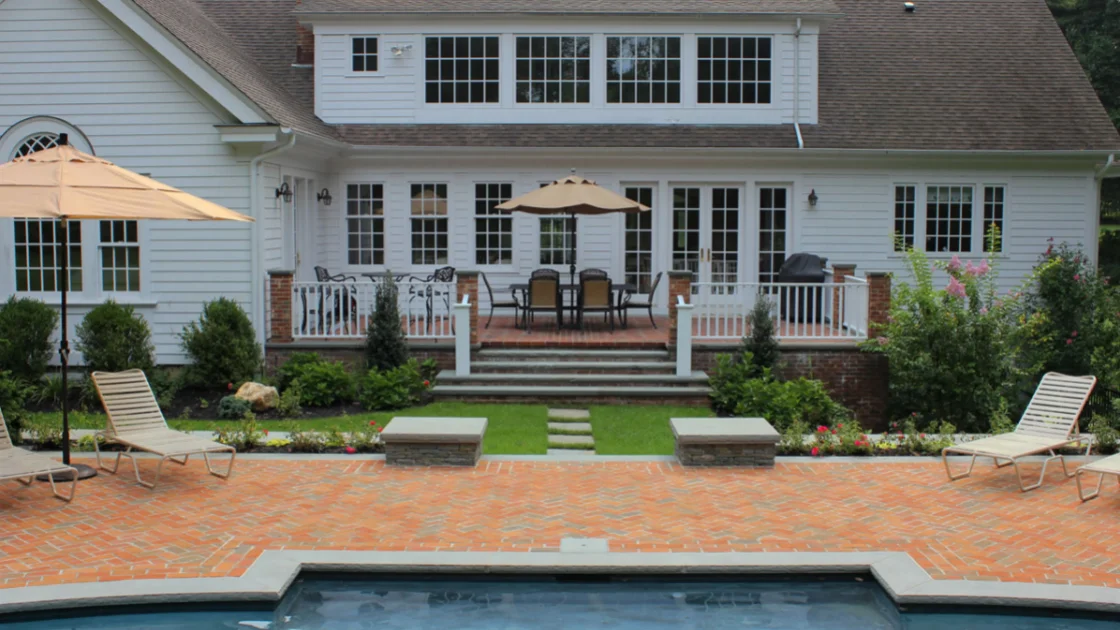In landscape design, thoughtful use of elements provides a sense of comfort and an aesthetic that is pleasing to the eye. Plants, lighting, and hardscape features can be arranged in such a way as to illicit a sense of balance and rhythm that can greatly affect the style and purpose of your Long Island, NY outdoor space. This helps a well-balanced landscape design achieve a simple elegance while remaining visually interesting. Here we’ll attempt to demystify these sometimes abstract concepts to give you a better understanding of what goes into designing an effective outdoor space.
Simplicity
The expression “less is more” is used frequently when talking about design in a wide scope of areas. What this means in landscaping is using a variety of elements in a way that avoids confusing or overwhelming the eye while remaining complex enough to create interest. In other words, simple designs focus on using as few embellishments as possible to achieve visual impact.
In these designs ornamentation is often substituted with interesting lighting for ambience, rich textures, high-quality, characterful building materials for detail, and bold lines and shapes for impact. In many cases, simplicity also implies a functional value with practicality and low-maintenance being a by-product of using high grade materials and fewer unnecessary flourishes.
Simplicity does not only apply to sleek modern designs. Even effective rustic landscapes make use of simplicity to achieve maximum impact by minimizing discordant elements, unifying a design with common motifs, clustering plants to avoid a scattered look, and utilizing balance and rhythm.
Balance
Two common forms of balance used in designing effective landscapes are symmetrical and asymmetrical balance. Symmetrical balance refers to a design that appears to mirror itself when viewed from a specific angle: a driveway with similar shaped plants on either side, for example. This is often used to create formal landscapes. Asymmetrical balance, on the other hand, is used to create free-flowing, informal landscapes. Here, elements can be arranged asymmetrically around a focal point or discrete line of symmetry.
Balance can also be used to refer to a skillful blend of sizes, shapes, colors and textures used in the environment to create visual harmony. The straight lines and hard edges of stone patios, for example, can be balanced with the softness of foliage and plants with rounded shapes. The coarse, rugged texture of gravel can likewise be balanced with the finer texture of sandstone or small leafed plants.
RELATED: MODERN LANDSCAPE DESIGN WITH GREENERY IN MIND
Rhythm
Landscape designers establish a rhythm by repeating elements at regular intervals to create a sense of continuity and motion. This can be achieved by using a repetition of colors, lines, or forms. Physical elements such as plants, lamp posts, and hardscaping features can all be arranged in such a way as to create a less chaotic environment and contribute to a sense of order. Rhythm can also be included in a landscape design with the introduction of evenly spaced stone slabs for walkways, the repeated lines of multi-tiered patio or the repetition of a color in the form of accent pavers in a patio or driveway.
RELATED: MATCHING YOUR LANDSCAPE TO YOUR HOME'S ARCHITECTURE


